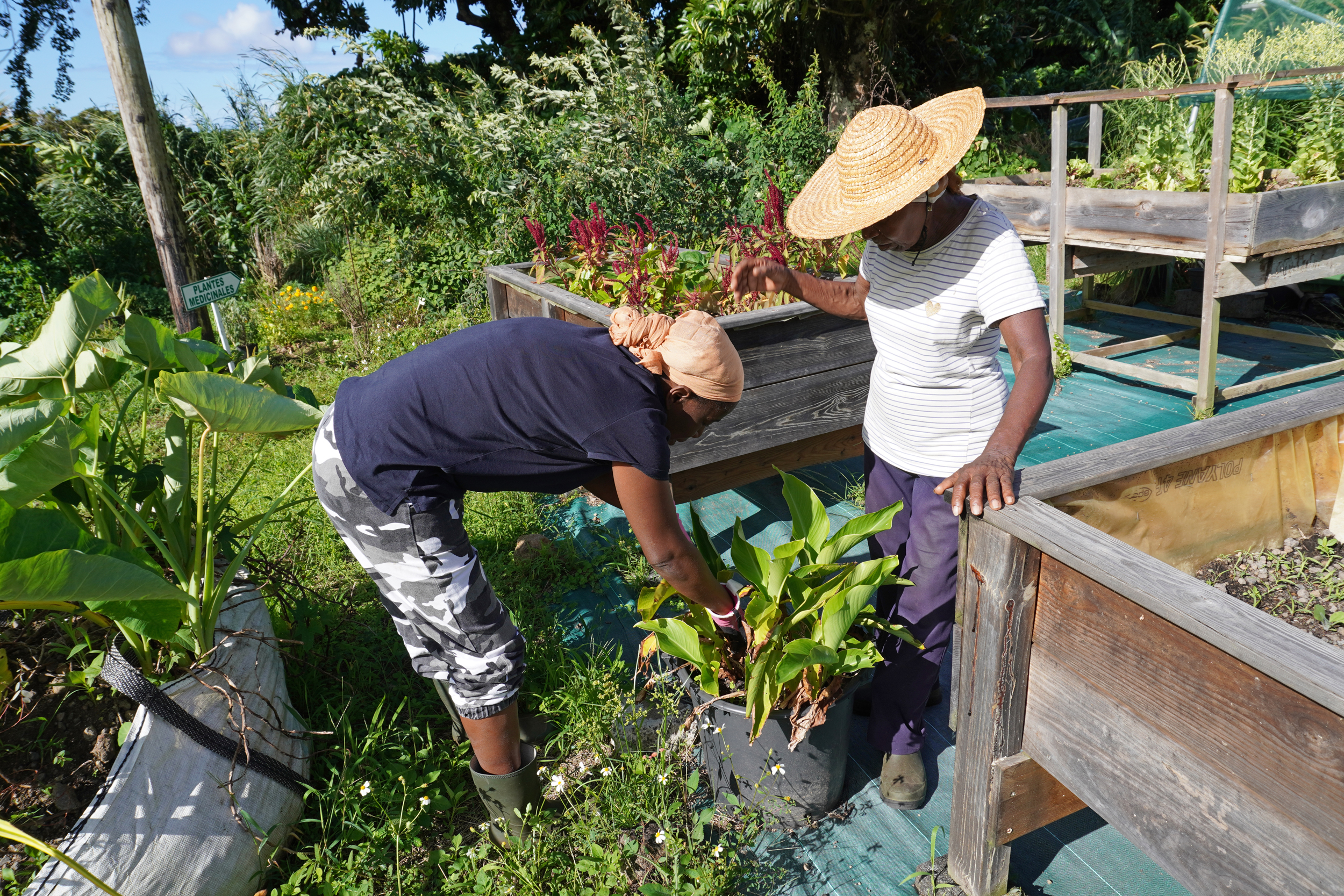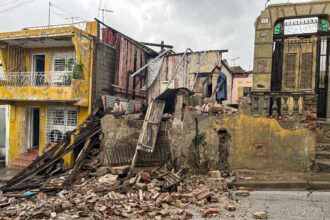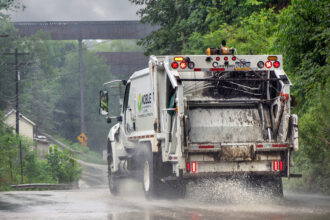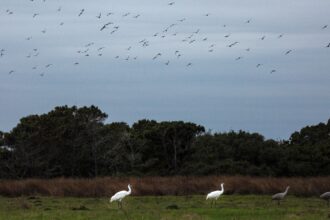As a kid in the French Caribbean island of Guadeloupe, Georgina Lambert spent her days playing beneath banana trees and swimming in rivers that shimmered with sunlight. She had no idea that the soil beneath her feet, the water she swam in and the air she breathed were laced with chlordecone, an extremely toxic pesticide.
Lambert was born in 1980 near the banana plantations in southern Basse-Terre, on Guadeloupe’s fertile volcanic soil. Her father, from Haiti, had moved to the island to answer the call for plantation labor.
“I still remember the banana plantations where we went to play. I spent most of my time outside, eating fruit, playing under the trees,” she said. She also remembers hugging her father when he came home from working in the plantations all day, and the strong chemical odors that lingered on his work clothes.
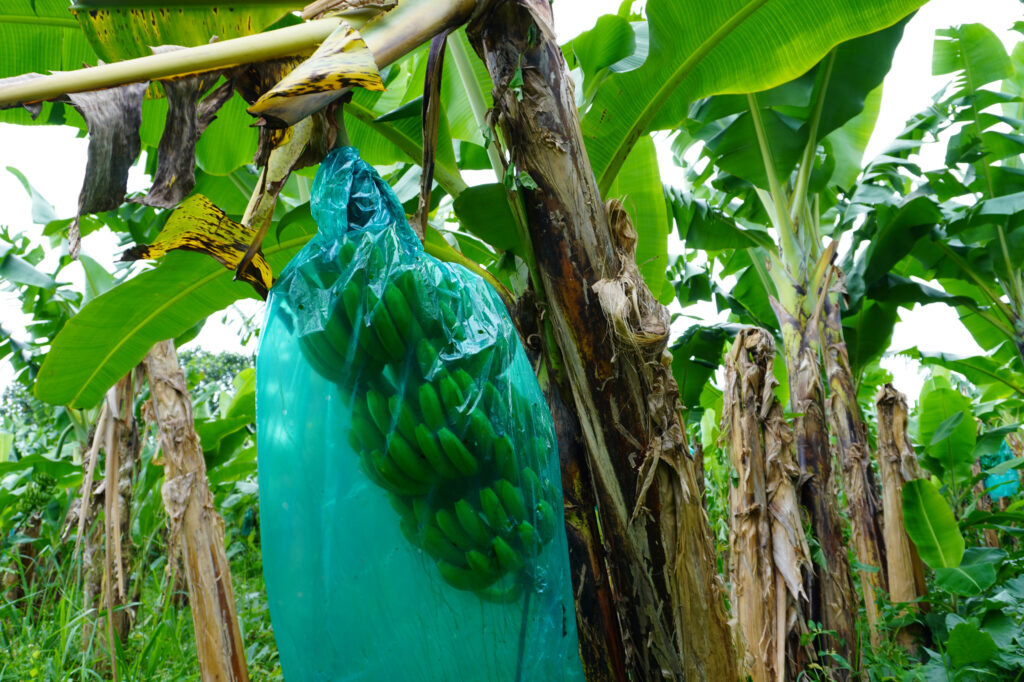
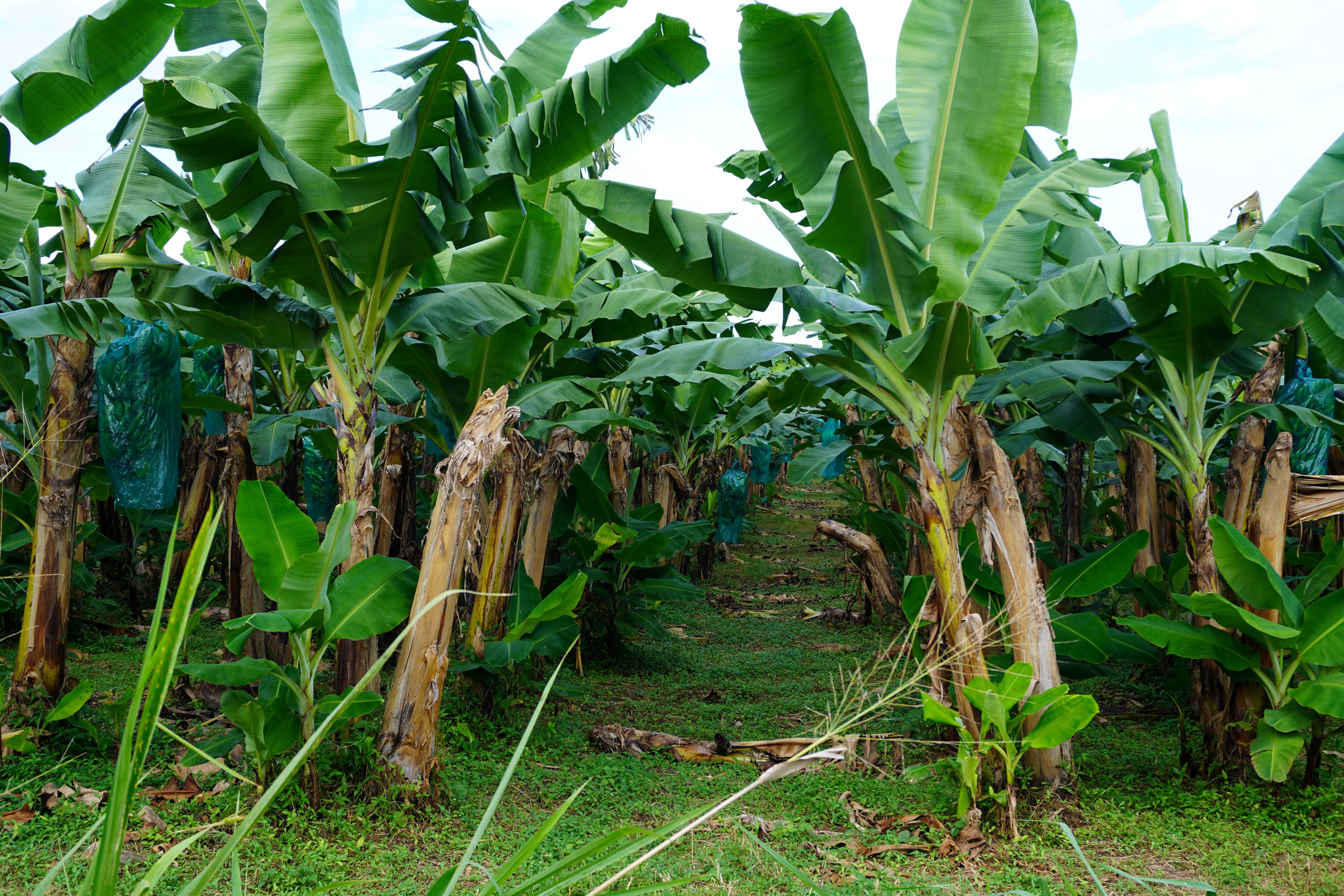
Decades later, Lambert, by then living in the Limousin region of France, endured six consecutive miscarriages in four years. In March 2025, a French court issued a landmark ruling holding the state liable for the emotional distress these reproductive struggles caused her. The judgment acknowledged that France had knowingly exposed her to a toxic pesticide as a child, which had devastating consequences throughout her life.
“I’m only 44 years old and the impact of chlordecone has already destroyed a lot in my life, in my femininity, and my ability to be a mother,” Lambert said. “I’ve been poisoned.”
In total, 11 victims were recognized: nine men who had developed prostate cancer and two women, including Lambert, who had suffered repeated miscarriages. All of the victims had lived in Guadeloupe and Martinique, two French overseas territories in the Caribbean, where the pesticide was used in banana plantations until the mid-1990s.
By then, the dangers of chlordecone were already well known and much of the world had already turned away from its use. The U.S. Environmental Protection Agency cancelled the pesticide’s registration in 1976, and the World Health Organization classified it as a carcinogen three years later.
Today, more than 90 percent of the population of those islands carries traces of chlordecone in their blood, and Guadeloupe and Martinique have some of the highest rates of prostate cancer in the world.
On islands more than 4,000 miles from their government in the French capital, the wounds left by this environmental disaster remain raw. Each push for recognition and justice sharpens questions around France’s relationship with its overseas territories, reigniting long-standing anger over colonialism, inequality and abandonment.
Given the high prostate cancer rates, much of the research and policy has focused on the impact of chlordecone on men’s health. Women, meanwhile, have long struggled to have other health effects of the pesticide acknowledged in political, scientific and legal arenas.
“We were exposed to this chemical that was known for its harmful effects, daily and constantly,” Lambert said. “And it has ruined lives.”
A Landmark Case for Reparations
As an adult, Lambert moved to mainland France to study, work and start a family. Through the years, she occasionally heard about chlordecone, mostly in the context of men’s health. Even as she encountered medical complications and suffered miscarriages, doctors never raised the potential effects of her exposure.
As the losses mounted, doctors referred her to specialists and the hospital placed her on a repeated miscarriage protocol, subjecting her to intense medical and genetic testing. Yet, the heartbreak continued.
“I was really angry at life,” she said. “I felt like something must be wrong with me.
“I was tired of seeing the doctors, tired of hearing them say the same thing every time. I kept telling myself that there must be something that I’m missing, there must be a reason.”
In search of an answer, Lambert began to research the impacts of chlordecone. Soon enough, she discovered other accounts of repeated miscarriages.
In 2019, Lambert came across a radio segment about a case filed by nearly 1,300 current and former residents of Guadeloupe and Martinique before the Paris Administrative Court of Appeal. Women and men alike were seeking damages for their exposure to the pesticide.
Fueled by a deep sense of injustice, she joined the court case. Ultimately, the state was ordered to compensate her, along with 10 other plaintiffs, up to €10,000 each.
While only a handful of victims were able to prove their case, the court’s March 2025 decision could have lasting impacts, allowing other victims whose health was impacted by chlordecone to use it as a legal precedent in similar claims.

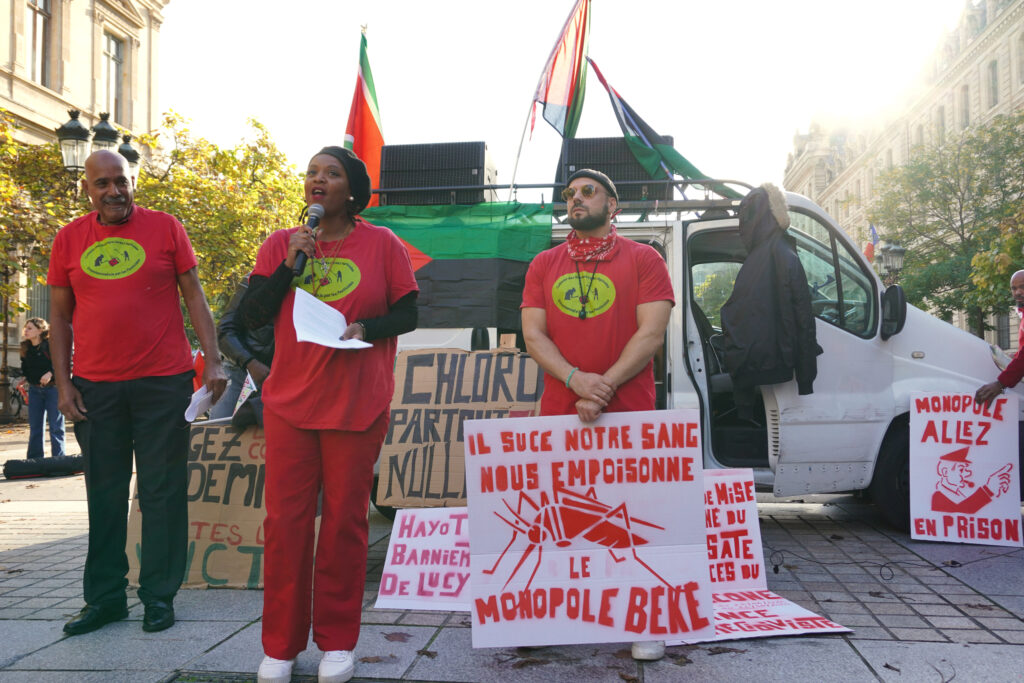
Protesters gather outside a Paris courthouse in October 2024 to support victims of chlordecone use in the French Caribbean after judges dismissed a lawsuit filed 18 years ago. The case is now awaiting appeal. Credit: Mathilde Augustin/Inside Climate News
Potentially to avoid an avalanche of claims, the state has announced its decision to contest the court ruling in France’s highest court of appeal. This move has drawn criticism from many, including the lawyer representing the plaintiffs, Christophe Leguevaques.
“The state is engaging in double-talk. The president and some ministers have publicly acknowledged the state’s share of responsibility, so why does it bother them when the courts agree?” Leguevaques said.
“[The state] claims it wants to improve the situation for its citizens, yet when there is a tool that allows them to do so, they challenge it. It’s incomprehensible to the residents of the French Caribbean.”
This type of judicial and administrative whiplash is common for victims of chlordecone. In 2006, local groups filed a criminal case for poisoning and endangering the lives of residents. The criminal case was dismissed after 16 years and will be re-examined in 2026.
No matter how the court cases evolve, Lambert isn’t planning to set foot on her home island. Her children repeatedly beg her to visit Guadeloupe, dreaming of the waterfalls she describes from her childhood. Their mom, who hasn’t returned in more than 15 years, refuses.
“Psychologically, I can’t get over it,” she said. Even looking at photos of tourists visiting her island makes her feel ill. “They’re beautiful photos, but all I see in those waterfalls is poison.”
More Recognition for Those Living With Cancer
To this day, much of Guadeloupe and Martinique is still covered in banana fields. Homes, schools and soccer fields border the plantations where chlordecone was once poured generously. With every rainstorm, the chemical seeps into the soil, contaminating water sources and spreading further.
With daily life so intertwined with banana production, it’s not hard to see how often residents came into contact with the pesticide. While many have fallen ill, there have historically been few avenues for justice.
Michel Trujillo is one of those residents. Though he never worked on a plantation, he has material proof of his exposure: a laboratory report he commissioned 25 years ago showing contamination in the bottled water he drank.
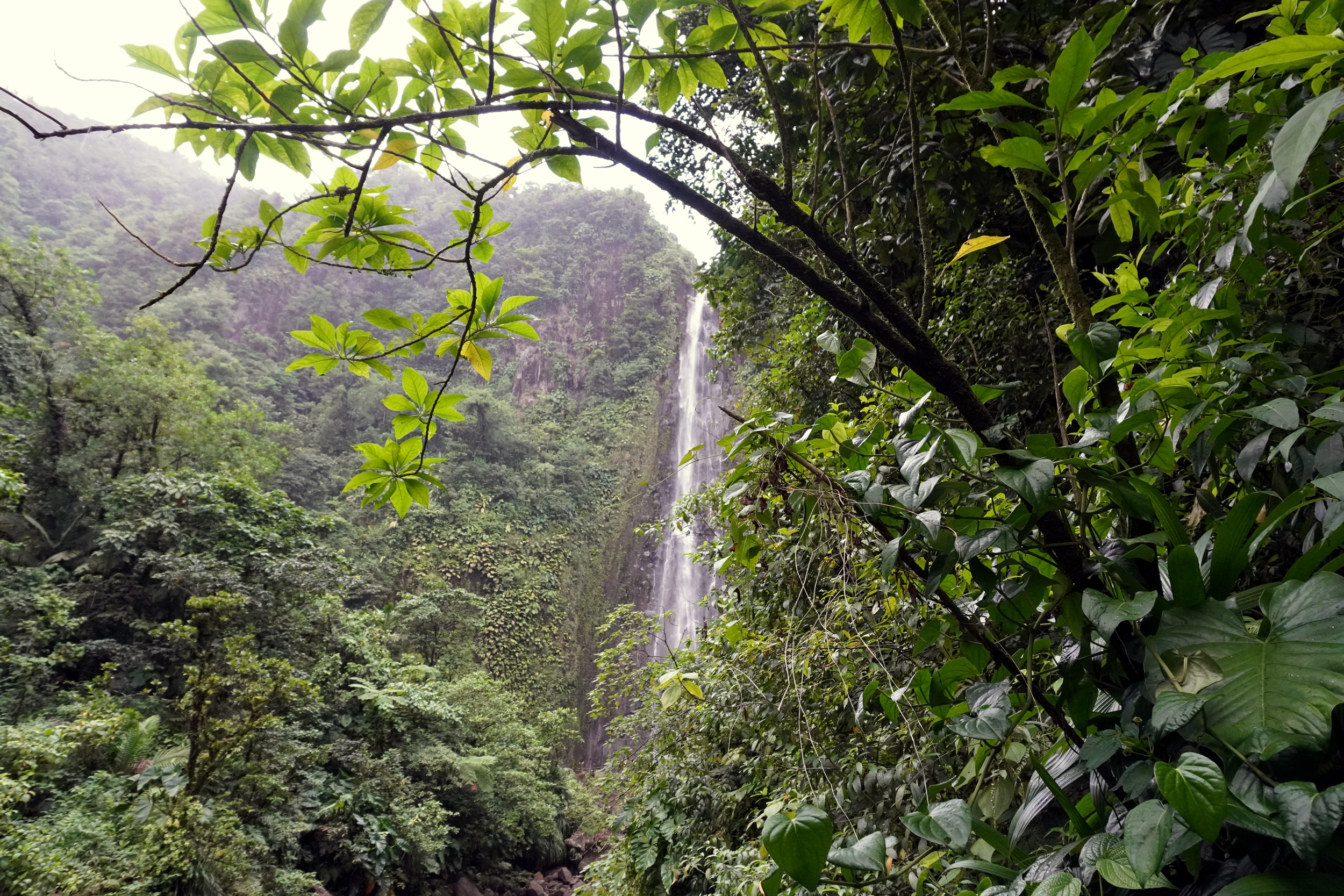
The lab report dates back to 2000, when Trujillo overheard a disturbing conversation in a Guadeloupean store. People were talking about chlordecone, and the rumor that the pesticide had tainted the island’s water supply.
Unsure whether what he heard was mere gossip or a serious allegation, Trujillo packed two sealed bottles of local spring water in his suitcase and brought them on a trip to mainland France to get tested.
A few weeks later, the results arrived. The bottled water Trujillo had been buying for his family for eight years was heavily contaminated.
“They said the dose of chlordecone was three times higher than what was allowed,” he recalled. “Can you imagine how surprised and angry I was?”
In 2011, Trujillo, who had by then relocated to Louisiana, was diagnosed with prostate cancer. After undergoing a radical prostatectomy, the cancer came back. A grueling course of 37 radiation sessions brought the disease back under control, but it has never truly left him alone since.
For over a decade, Trujillo’s life has been shaped by regular monitoring through PSA (prostate-specific antigen) tests. Every six months Trujillo, 74, braces for the results, hoping for no new alarms. In recent years, his PSA levels have again crept above the safe threshold.
Chlordecone not only increases the risk of prostate cancer among men, but it also makes it more likely to reoccur.
“I live with this sneaky feeling,” he said. “I’m always worried. I’ve put my life on hold, and I’ve lived in six-month stretches.”
This story is funded by readers like you.
Our nonprofit newsroom provides award-winning climate coverage free of charge and advertising. We rely on donations from readers like you to keep going. Please donate now to support our work.
Donate NowAs part of the court case settled at the Paris Administrative Court of Appeal, his suffering was legally recognized as a result of his exposure to the pesticide. When evaluating his case, the court found that the anxiety he experiences over the risk of the cancer returning is “directly and certainly” linked to his exposure to chlordecone.
This comes a few years after prostate cancer was recognized as an occupational disease for plantation workers, many of whom were forced to spread the chemical with their bare hands and no protective gear. Until now, those who were not plantation workers, who worked there only temporarily or who lacked documentation to prove it, had received little acknowledgement.
For Trujillo, the court decision offers little comfort. Nonetheless, he hopes that his fight will help open the door to broader recognition, greater accountability and justice for all those affected.
“I don’t care about the money,” he said. “I’d much rather have my health than the money.”
As Contamination Persists, so Does Research
In recent years, studies from the French National Institute of Health and Medical Research (Inserm) have shown that it’s an endocrine disruptor that increases risks of prostate cancer, can cause premature births and may lead to neuro-developmental and behavioral difficulties among children.
A study released in 2014 showed that 94 percent of Guadeloupeans and 92 percent of Martiniquans had traces of chlordecone in their blood. Other studies, including some in Canada, have linked chlordecone to cardiac dysfunction.
On October 16, 2025, a team of researchers published new research revealing that chlordecone impairs women’s fertility. The epidemiologic study showed that over the course of a menstrual cycle, women with high concentrations of chlordecone in their blood were 25 to 28 percent less likely to conceive.
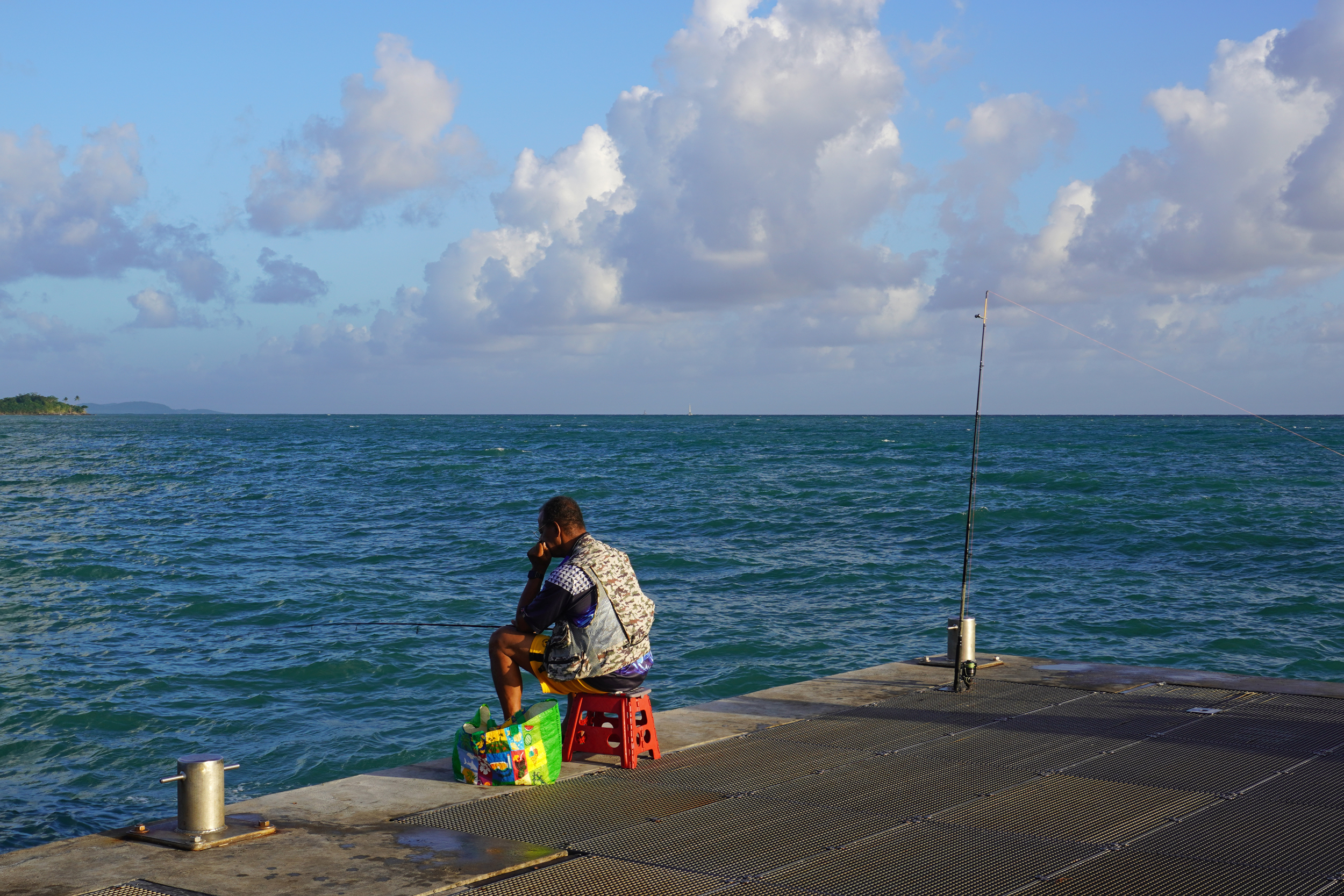
The research, conducted on hundreds of women in Guadeloupe, concluded that exposed women would take longer to conceive because of the pesticide. It shed light on a reality that local women have long faced.
With a lifespan of up to 600 years in soils, the pesticide continues to seep into streams, harbors and even drinking water. Contaminated land sickens grazing livestock, while vegetables grown in the poisoned soil pass the toxin straight to those who consume them.
“The food chain was contaminated,” said Luc Multigner, one of the lead researchers at Iserm, who spent two decades studying the pesticide. “As a result, contamination wasn’t limited to banana plantation areas only.”
Reducing exposure is possible by consuming less contaminated food, which can gradually lower chlordecone levels in the body. But given how long chlordecone persists in soil, this requires the population to make permanent changes to their habits and lifestyles.
“The chlordecone issue can’t be fully resolved unless the population living in the territory is an active participant,” Multigner added.
In recent years, the French government has enacted several policies to attempt to remedy the crisis. In 2021, it started to provide residents with free blood tests called “chlordeconemie” to help them monitor their contamination levels.
After a positive blood test, patients are advised to modify their diets. A major challenge, however, is that many families grow their own food in traditional Creole gardens, a practice passed down through generations and dating back to enslaved populations and the islands’ Indigenous populations.
For many, Creole gardens are more than tradition, they’ve become a financial necessity. In Guadeloupe and Martinique, where nearly one-third of the population lives in poverty, food prices are 40 percent higher than in mainland France.
To try to mitigate exposure through Creole gardens, government-funded organizations offer voluntary free soil testing on residents’ properties. In Guadeloupe, an organization called Jafa is responsible for these tests.
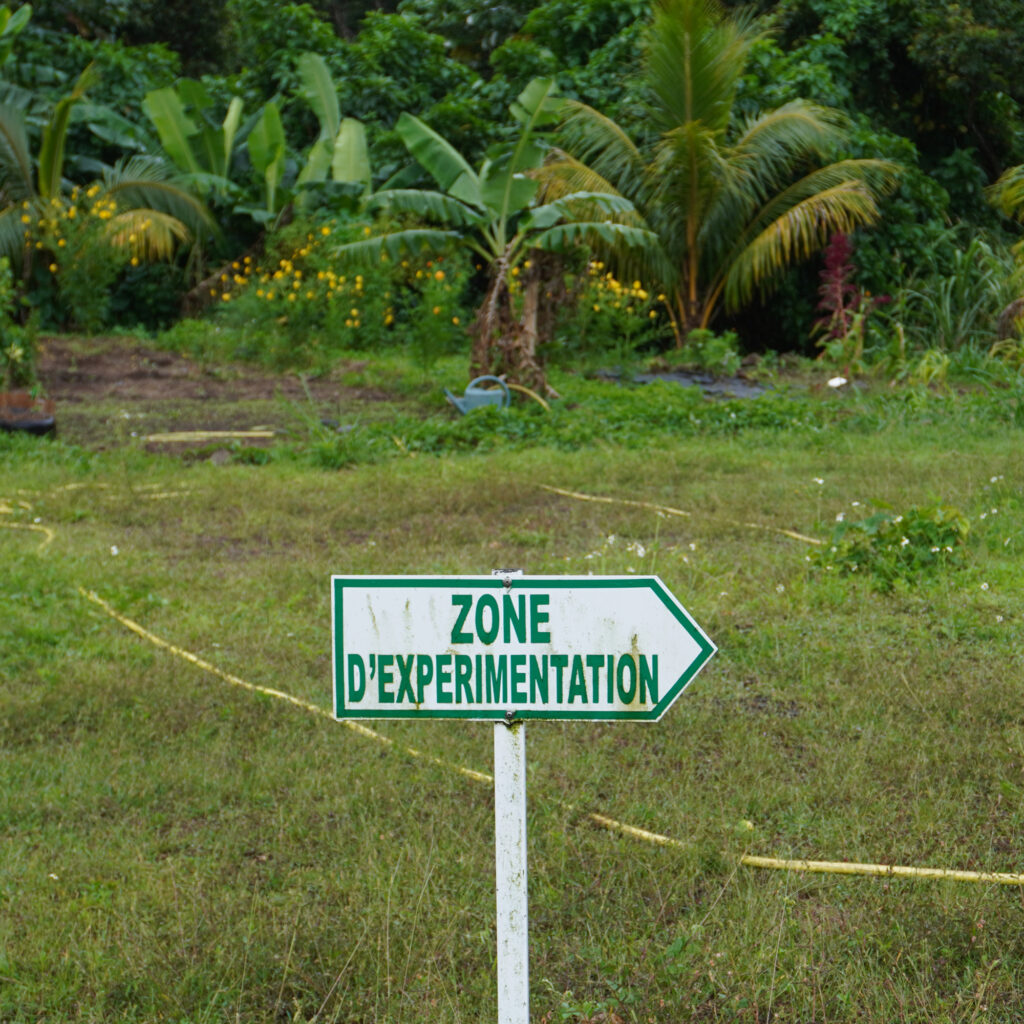
When results are positive, a member of the organization visits the families to hand them results and make recommendations. Often, residents are advised to build above-ground containers filled with uncontaminated soil.
The idea is to adapt, rather than giving up the practice altogether, said Axelle Beniey, who helps run the Jafa program.
“This is a traditional practice that we’re working with, and it carries an ancestral cultural heritage,” she explained. “We know that this is a rich and virtuous practice, and we absolutely do not want to stigmatize it, or harm the social bonds connected to it.”
Over three years, about 8,170 tests were conducted across Martinique and Guadeloupe. The results then help build maps of contamination levels across the islands.
Despite these policies, the crisis has no sustainable or permanent resolution in sight. With pollution likely to last for centuries, many feel the government’s response has come too late and is too little.
Josiane Jos Pelage, a pediatrician, organizes community meetings to help residents better understand chlordecone and its dangers. She routinely hears frustration and anger from people who feel that the solutions being offered by the government fall short.
The “maximum residue limit” policy, which allows food contaminated under a certain threshold to be sold and consumed, regularly comes under fire at her community events.
“They’re trying to contain the problem, not solve it,” she said. “It’s not ambitious enough.”
Jos Pelage and her Martinique-based organization, the Medical Association for the Protection of Environment and Health, advocate for a “zero chlordecone” approach. She hopes that one day, the government will commit to a long-term plan to completely remove the pesticide from islanders’ diets.
Like many others on the islands, she feels as though the same situation would have been handled differently in mainland France. “We’re tiny, so it doesn’t interest anyone,” she said. “Even if our population were to disappear.”
This story was supported by the Pulitzer Center.
About This Story
Perhaps you noticed: This story, like all the news we publish, is free to read. That’s because Inside Climate News is a 501c3 nonprofit organization. We do not charge a subscription fee, lock our news behind a paywall, or clutter our website with ads. We make our news on climate and the environment freely available to you and anyone who wants it.
That’s not all. We also share our news for free with scores of other media organizations around the country. Many of them can’t afford to do environmental journalism of their own. We’ve built bureaus from coast to coast to report local stories, collaborate with local newsrooms and co-publish articles so that this vital work is shared as widely as possible.
Two of us launched ICN in 2007. Six years later we earned a Pulitzer Prize for National Reporting, and now we run the oldest and largest dedicated climate newsroom in the nation. We tell the story in all its complexity. We hold polluters accountable. We expose environmental injustice. We debunk misinformation. We scrutinize solutions and inspire action.
Donations from readers like you fund every aspect of what we do. If you don’t already, will you support our ongoing work, our reporting on the biggest crisis facing our planet, and help us reach even more readers in more places?
Please take a moment to make a tax-deductible donation. Every one of them makes a difference.
Thank you,


